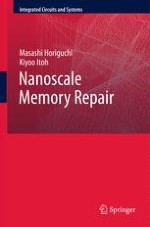2011 | OriginalPaper | Buchkapitel
4. Combination of Redundancy and Error Correction
verfasst von : Dr. Masashi Horiguchi, Dr. Kiyoo Itoh
Erschienen in: Nanoscale Memory Repair
Verlag: Springer New York
Aktivieren Sie unsere intelligente Suche, um passende Fachinhalte oder Patente zu finden.
Wählen Sie Textabschnitte aus um mit Künstlicher Intelligenz passenden Patente zu finden. powered by
Markieren Sie Textabschnitte, um KI-gestützt weitere passende Inhalte zu finden. powered by
